A convergent beam is incident on two slabs placed in contact as shownin figure. Where will the rays finally converge?
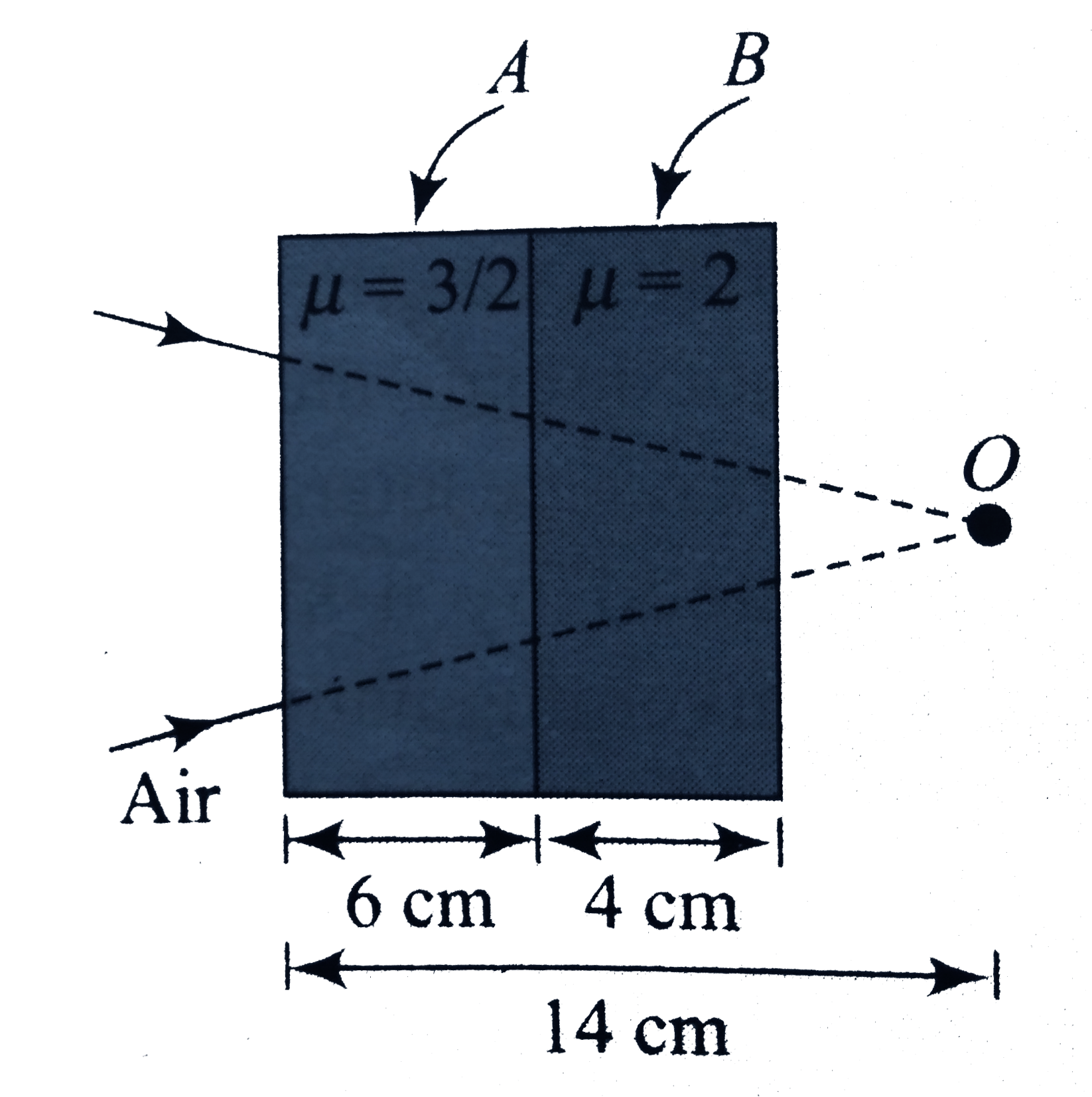
A ray of light from the object undergoes refraction at three interfaces: (1) Air-medium A, (2) Medium A-mudium B, (3) Medium B-air. The coordinate system for each of the interface is shown in the following figure.
Air-medium A interface:
d1=+14cm,μ1=1,μ2=1.5
As μ1d1=μ2d2 or d2=μ2μ1d1 , we get
d2=+21cm
Medium A-medium B interface:
d1=(21−6)=15cm,μ1=1.5,μ2=2
As μ1d1=μ2d2 or d2=μ2μ1d1 , we get
d2=+20cm
Medium B-air interface:
d1=+(20−4)=+16cm,μ1=2,μ2=1
As μ1d1=μ2d2 or d2=μ2μ1d1 , we get
d2=+8cm
Thus, the final image is 8cm in front of the medium B-air interface.
Method 2: Method of shifting
Net shifting S=6(1−13/2)+4(1−12)
=4cm
The shifting will be in the direction of ray travelling, i.e., towards right.
Hence, rays will coverge finally =14+4=18cm from left surface or 8cm from right surface.
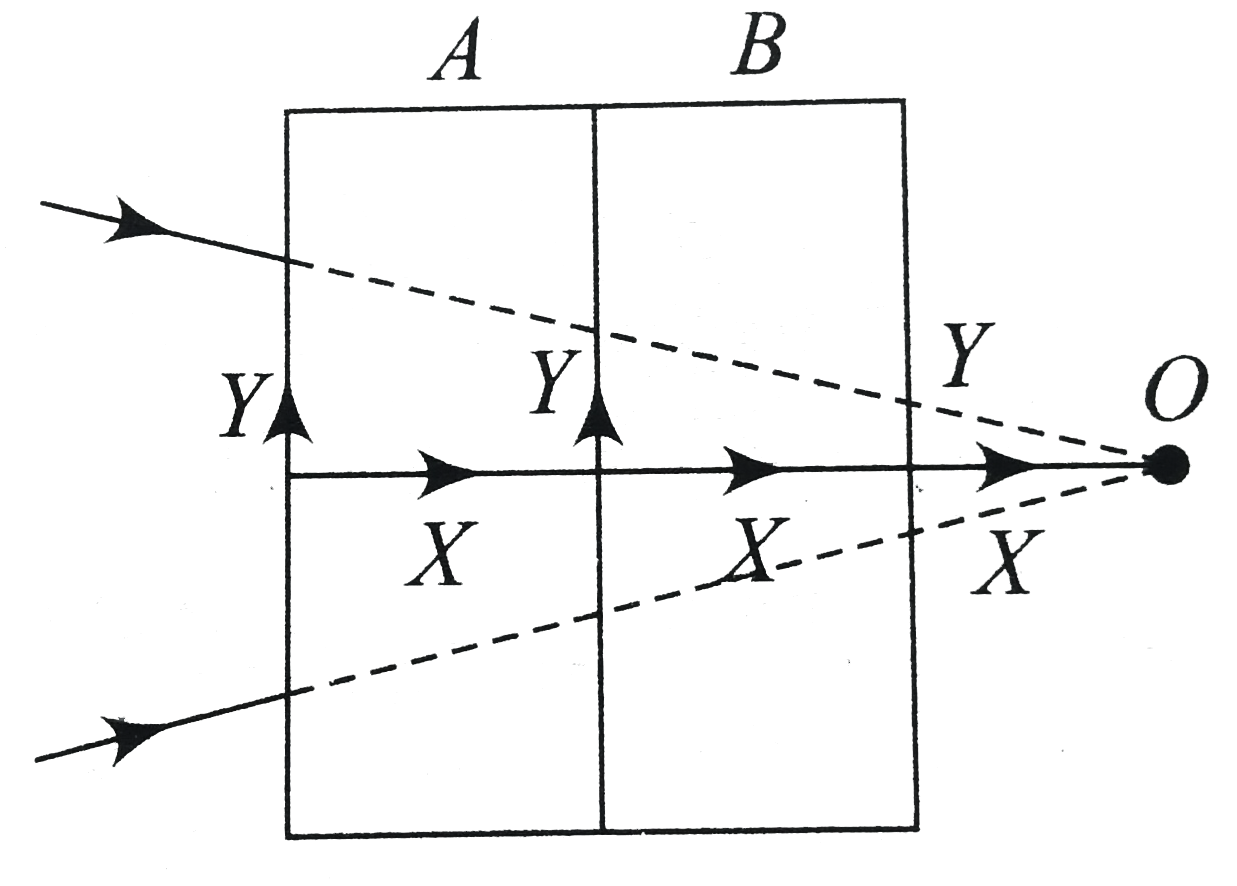
Topper's Solved these Questions
- BOOK - CENGAGE PHYSICS ENGLISHCHAPTER - GEOMETRICAL OPTICSEXERCISE - Exercise1.412videos
GEOMETRICAL OPTICS
- BOOK - CENGAGE PHYSICS ENGLISHCHAPTER - GEOMETRICAL OPTICSEXERCISE - Exercise1.522videos
GEOMETRICAL OPTICS
- BOOK - CENGAGE PHYSICS ENGLISHCHAPTER - GEOMETRICAL OPTICSEXERCISE - Exercise1.220videos
GEOMETRICAL OPTICS
- BOOK - CENGAGE PHYSICS ENGLISHCHAPTER - ELECTRON,PHONTS,PHOTOELECTRIC EFFECT & X-RAYSEXERCISE - dpp 3.315videos
ELECTRON,PHONTS,PHOTOELECTRIC EFFECT & X-RAYS
- BOOK - CENGAGE PHYSICS ENGLISHCHAPTER - HEATING EFFECT OF CURRENTEXERCISE - Thermal Power in Resistance Connected in Circuit27videos
HEATING EFFECT OF CURRENT
Similar Questions
A convergent beam is incident on two slabs placed in contact as shown in fig. Finally the rays are converge at a distance (from left face of slab A is )
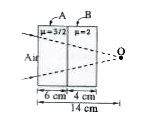 View Solution
View SolutionTwo identical thin isosceles prisms of refracting angle A and refractive index μ are placed with their bases touching each other and this system can collectively act as a crude converging lens. A parallel beam of light is incident on this system as shown in Figure. Find the focal length of this so called converging lens.
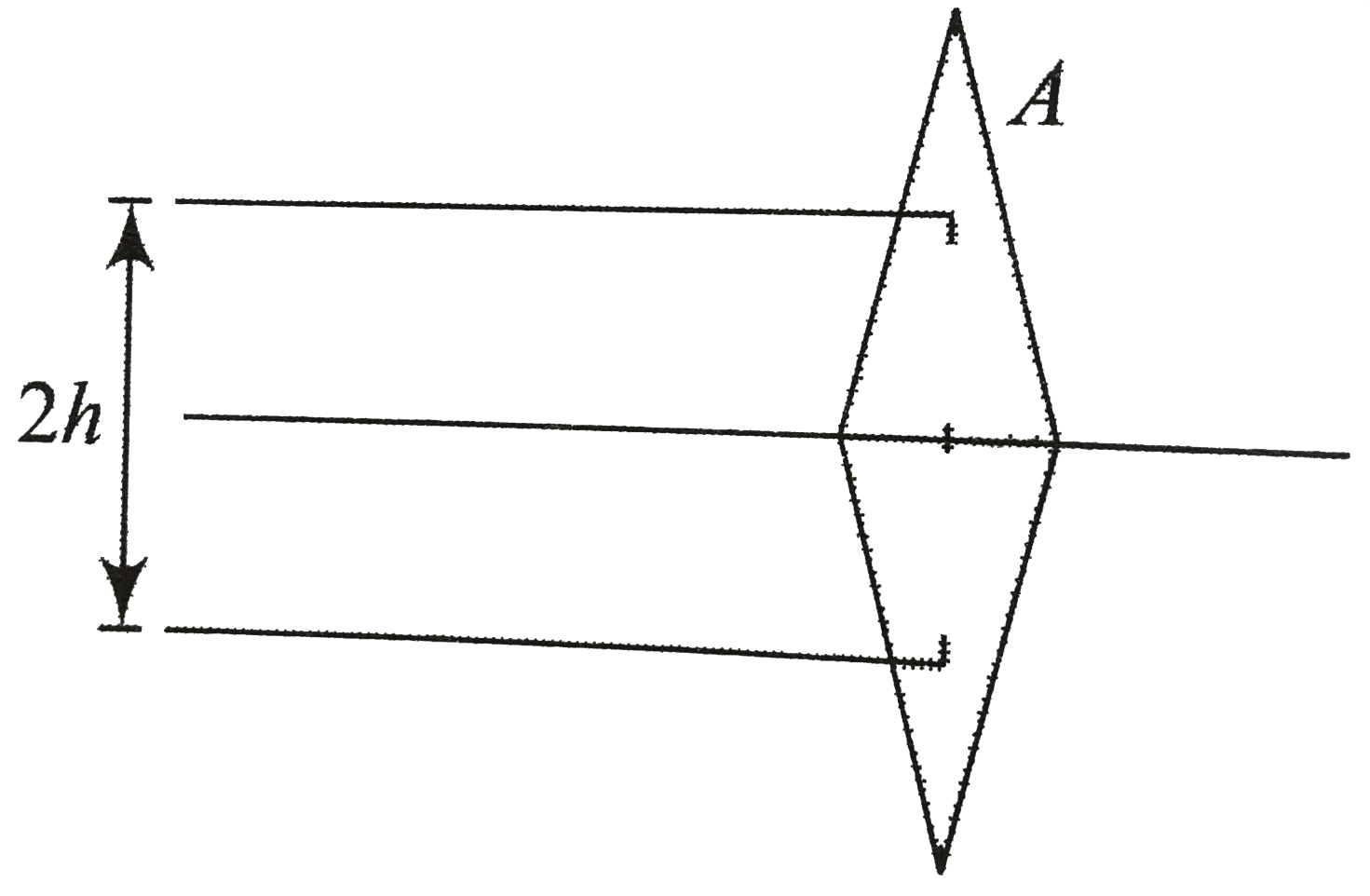 View Solution
View Solution
Knowledge Check
- Question 1 - Select One
A rays of light is incident on a thick slab of glass of thickness t as shown in figure. The emergent ray is parallel to the incident ray but displaced sideways by a distance d. If the angles are small then d is
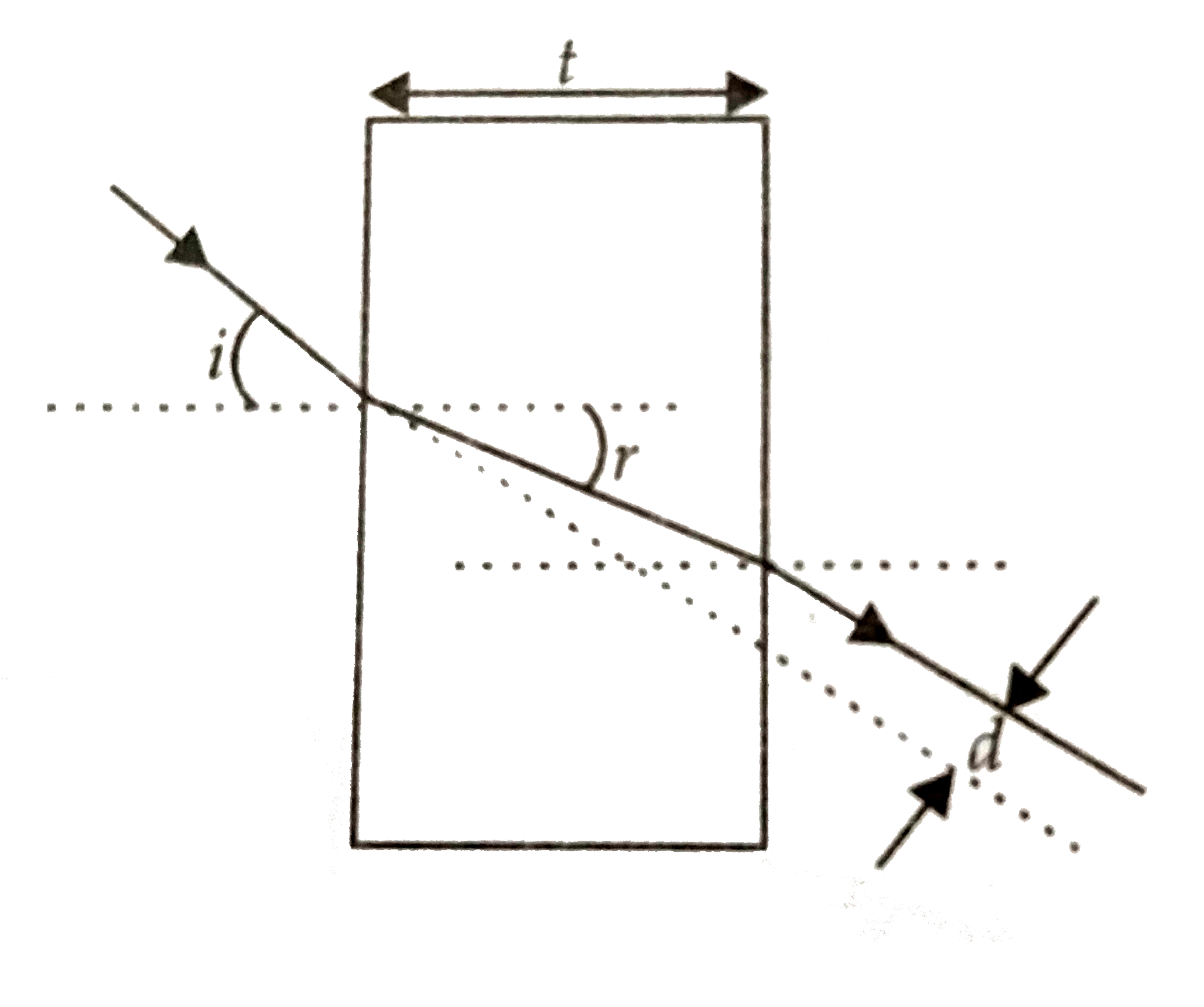 At(1+ir)Brt(1−ir)Cit(1−ri)Dt(1+ri)
At(1+ir)Brt(1−ir)Cit(1−ri)Dt(1+ri) - Question 2 - Select One
Consider a light beam incident from air to a glass slab at Brewster's angle as shown in figure.
A polaroid is placed in the path of the emergent ray at point P and rotated about an axis passing through the centre and pependicular to the plane of the plaroid.
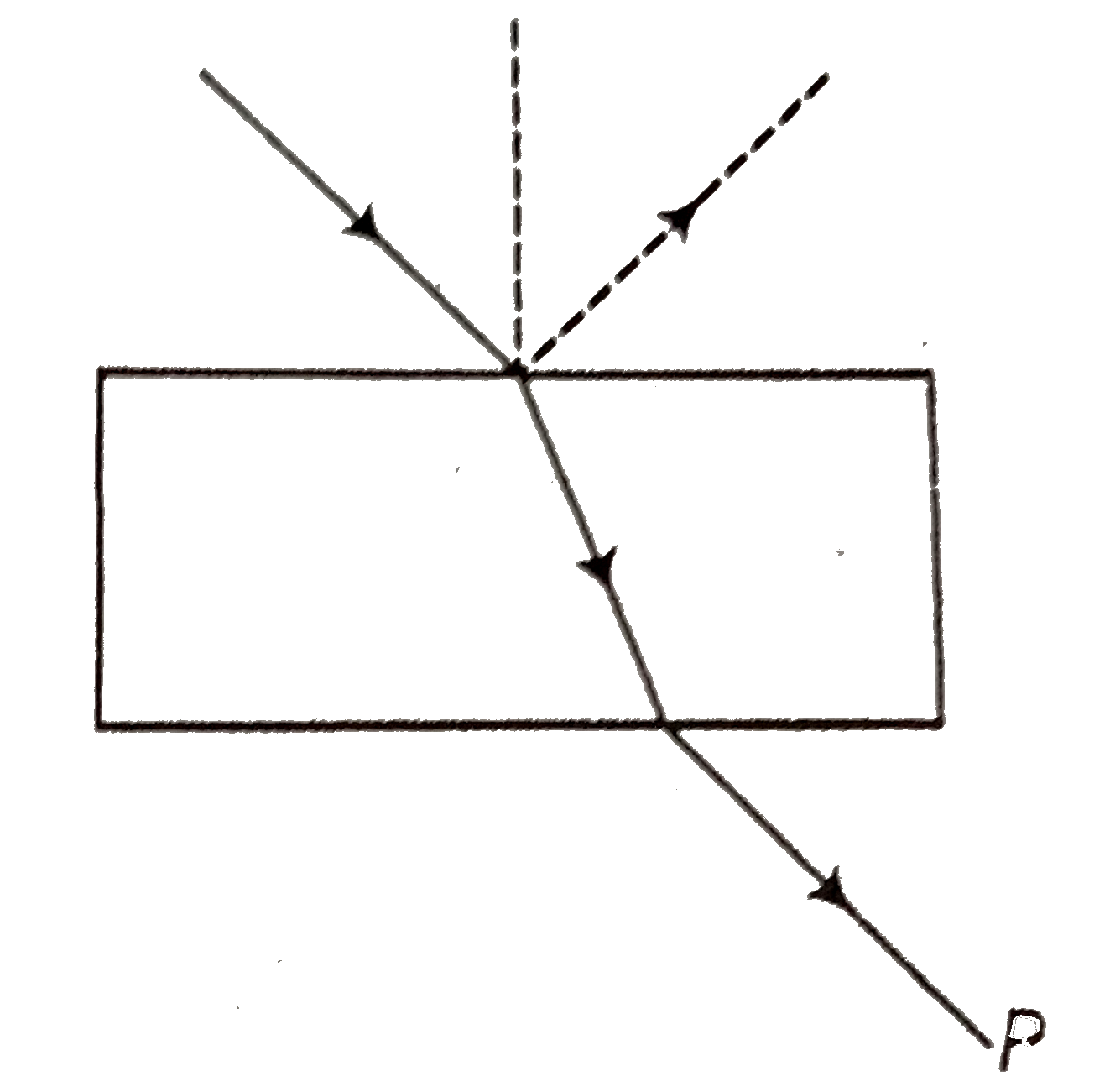 AFor a paricular orientation there shall be darkness as observed through the polaroid.BThe intensity of light as seen through the polaroid shall be independent of the rotation.CThe intensity of light as seen through the polaroid shall go through a minimum but not zero for two orientations of the polaroid.DThe intensity of light as seen through the polaroid shall go through a minimum for four orientations of the polaroid.
AFor a paricular orientation there shall be darkness as observed through the polaroid.BThe intensity of light as seen through the polaroid shall be independent of the rotation.CThe intensity of light as seen through the polaroid shall go through a minimum but not zero for two orientations of the polaroid.DThe intensity of light as seen through the polaroid shall go through a minimum for four orientations of the polaroid.

A ray is incident on interface of two media at critical angle as shown in the figure.View SolutionA converging beam of rays is incident on a diverging thin lens. Having passed through the lens the rays intersect at a point 15cm from the lens. If lens is removed the point where the rays meet will move 5cm closer towards the mounting that holds the lens. The focal length of lens is
View SolutionA converging set of ray, traveling from water to air, is incident on a plane interface. In the absence of the interface, the rays would have converged to a point O, 60 cm above the interface. However, dur to refraction the rays will bend. At what distance above the interface will the rays actually converge?
 View Solution
View SolutionA converging beam of rays is incident on a diverging lens. Having passed through the lens the rays intersect at a point 15cm from the lens. If the lens is removed, the point where the rays meet, move 5cm closer to the mounting that holds the lens. Find the focal length of the lens.
View SolutionConsider a light beam incident from air to a glass slab at Brewster's angle as shown in figure.
A polaroid is placed in the path of the emergent ray at point P and rotated about an axis passing through the centre and pependicular to the plane of the polaroid.
 View Solution
View SolutionConsider a light beam incident from air to a glass slab at Brewster's angle as shown in figure.
A polaroid is placed in the path of the emergent ray at point P and rotated about an axis passing through the centre and pependicular to the plane of the plaroid.
 View Solution
View Solution

